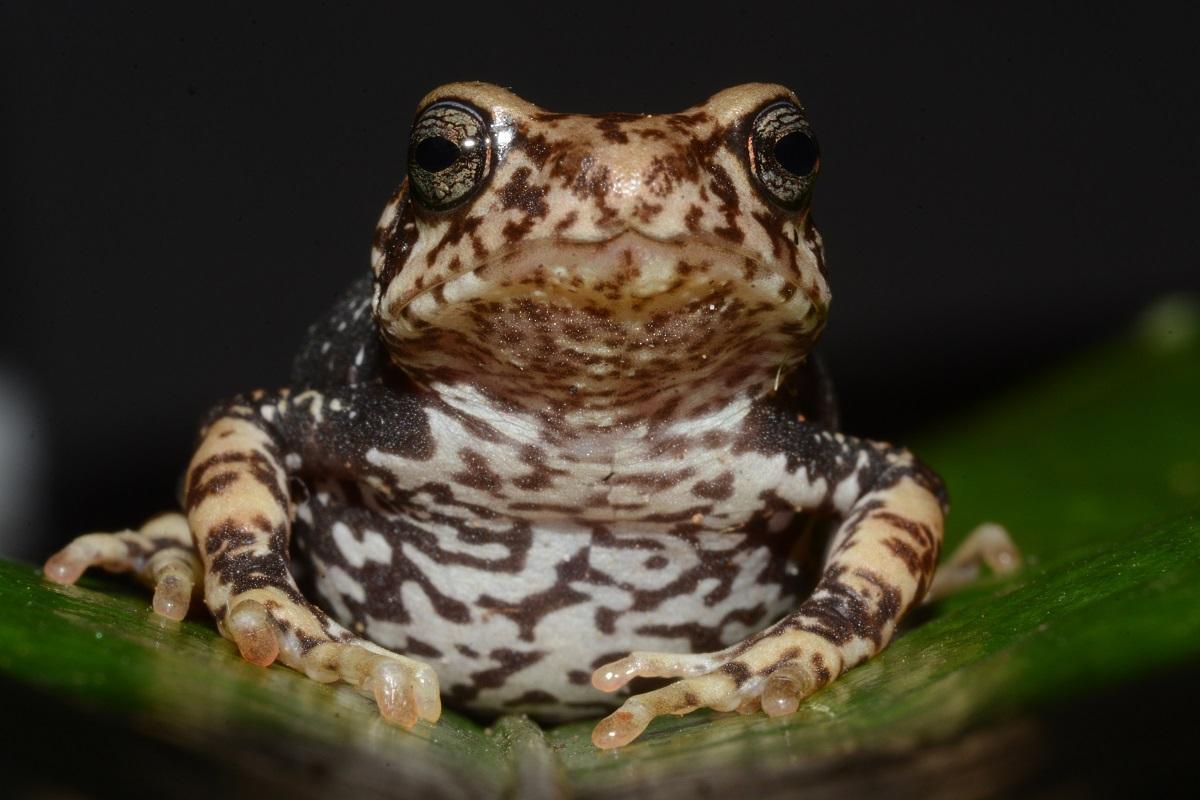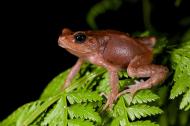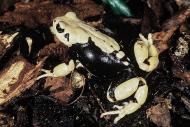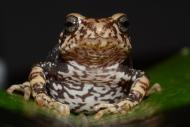An international team of researchers has discovered three new, bizarre, and wart-covered species of tree toads from Tanzania that give birth to fully developed toadlets. A key element of the study was the examination of specimens housed in the wet collection of the Museum für Naturkunde in Berlin, highlighting the continuing importance of natural history collections for scientific research and biodiversity conservation. The study was published today in the open-access journal Vertebrate Zoology.
Most textbooks tell only one story about frog reproduction: eggs hatch into tadpoles, which then metamorphose into froglets and grow into adults. ‘That’s the standard paradigm,’ says Assoc. Prof. Mark D. Scherz, Curator of Herpetology at the Natural History Museum of Denmark and co-author of the study. ‘In reality, amphibian reproductive biology is incredibly diverse.’ As early as 1905, the German researcher Gustav Tornier presented to the Royal Prussian Academy of Sciences in Berlin the discovery of a toad from Tanzania that astonishingly gives birth to live young. These originally described specimens, known as type specimens, are preserved in the wet collection of the Museum für Naturkunde Berlin and continue to be studied as new questions arise. ‘Some of these specimens were collected more than 120 years ago,’ says Dr. Alice Petzold, guest researcher in the Museum’s Herpetology Lab, who carried out the museomics part of the study. ‘Our analyses revealed exactly which populations these old specimens once belonged to, giving us much greater confidence for future research on these toads.’
At the beginning of the 20th century, this toad was the only known frog species in the world recognized as live-bearing. Today, it is known that ‘Tree Toads’ of the genus Nectophrynoides and their close relative, the Nimba toad (Nimbaphrynoides occidentalis), also reproduce this way. Only one other frog species from Southeast Asia employs a similar strategy, giving birth to live tadpoles. ‘Live-bearing among frogs and toads is extremely rare and occurs in less than one percent of all species, which makes these new species especially fascinating,’ says Dr. H. Christoph Liedtke, co-author from the Spanish National Research Council and an expert on the evolution of amphibian reproductive strategies.
Phylogenetic analyses in recent years had already revealed previously unrecognized diversity among tree toads. ‘By visiting various natural history museums, examining hundreds of preserved specimens, and using so-called museomic methods to extract DNA, we were able to gain a clearer picture of their morphological diversity and describe new species,’ says Christian Thrane of the University of Copenhagen, lead author of the study.
‘These discoveries highlight both the diversity of live-bearing toads and the urgent importance of protecting East Africa’s forests,’ says Dr. Simon P. Loader, Principal Curator of Vertebrates at the Natural History Museum, London, co-author of the study and an expert on East African amphibians. ‘If we lose these forests, we will lose one of the most unusual forms of amphibian reproduction known. And only by continuing to explore these poorly known areas, and protecting them, can we gain a more complete picture of the diversity they harbour, and ensure that it is around for future generations to study.’
The new species are from the Eastern Arc Mountains of Tanzania, an imperilled biodiversity hotspot famed for the many species that are found nowhere else on Earth. These mountains that rise from the plains are cloaked in lush forests, but unfortunately according to Dr Michele Menegon who works for a conservation organisation whose work focuses on forest protection notes how highly fragmented these habitats are and that this is impacting the biodiversity, including the toads that dwell there. The forests where these toads are known to occur are disappearing quickly,’ says John V. Lyakurwa, a researcher the University of Dar es Salaam, who has been studying amphibians in the EAM, including these toads, and a coauthor on the study. Most of the Tree toads are already on the brink of extinction, with ‘one species in this genus, Nectophrynoides asperginis, already extinct in the wild, and another Nectophrynoides poyntoni not observed since its discovery in 2003.
The full paper is available at https://doi.org/10.3897/vz.75.e167008



